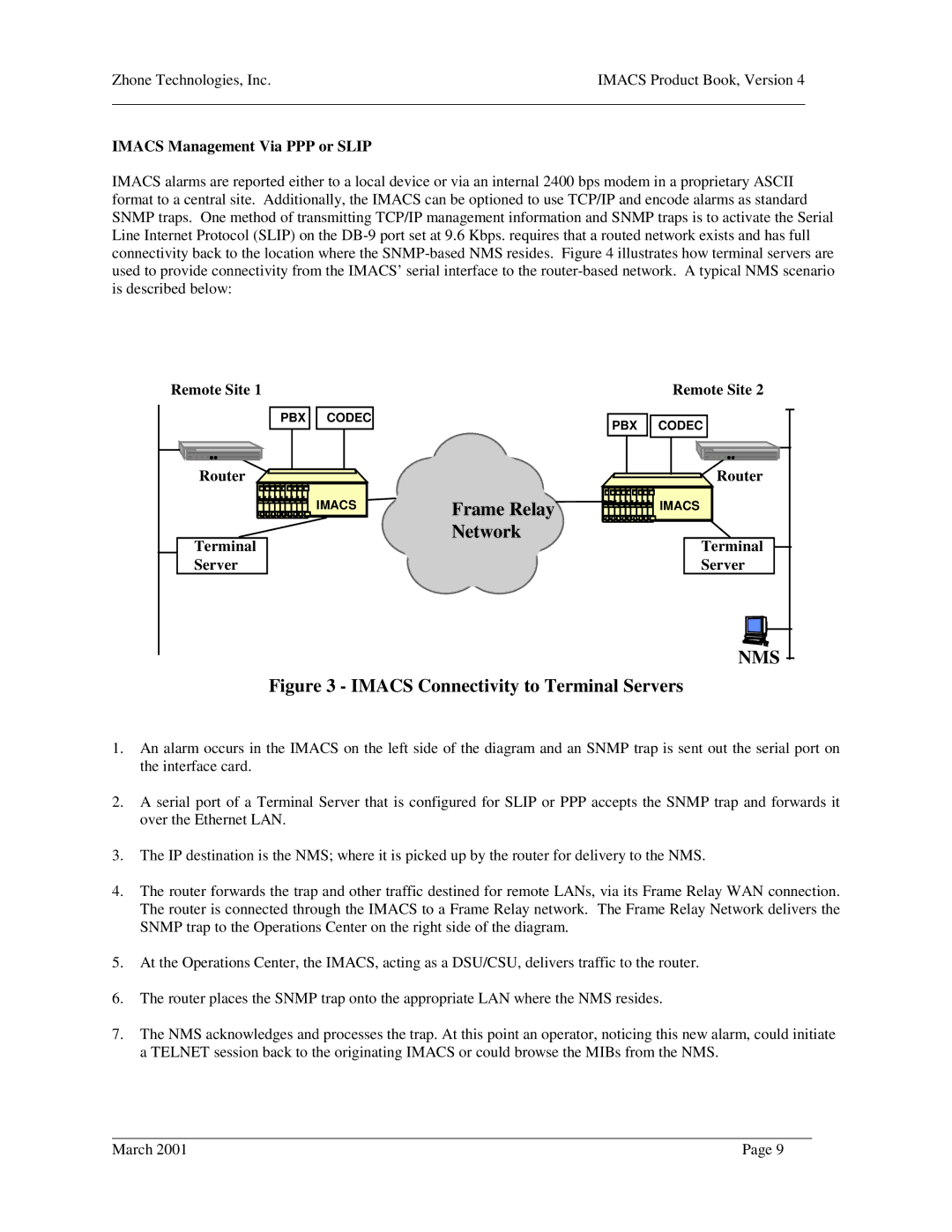
Zhone Technologies, Inc. | IMACS Product Book, Version 4 |
|
|
IMACS Management Via PPP or SLIP
IMACS alarms are reported either to a local device or via an internal 2400 bps modem in a proprietary ASCII format to a central site. Additionally, the IMACS can be optioned to use TCP/IP and encode alarms as standard SNMP traps. One method of transmitting TCP/IP management information and SNMP traps is to activate the Serial Line Internet Protocol (SLIP) on the
Remote Site 1
PBX ![]()
![]() CODEC
CODEC
Router
IMACS |
Terminal
Server
| Remote Site 2 |
PBX | CODEC |
| Router |
Frame Relay | IMACS |
Network | Terminal |
| |
| Server |
NMS
Figure 3 - IMACS Connectivity to Terminal Servers
1.An alarm occurs in the IMACS on the left side of the diagram and an SNMP trap is sent out the serial port on the interface card.
2.A serial port of a Terminal Server that is configured for SLIP or PPP accepts the SNMP trap and forwards it over the Ethernet LAN.
3.The IP destination is the NMS; where it is picked up by the router for delivery to the NMS.
4.The router forwards the trap and other traffic destined for remote LANs, via its Frame Relay WAN connection. The router is connected through the IMACS to a Frame Relay network. The Frame Relay Network delivers the SNMP trap to the Operations Center on the right side of the diagram.
5.At the Operations Center, the IMACS, acting as a DSU/CSU, delivers traffic to the router.
6.The router places the SNMP trap onto the appropriate LAN where the NMS resides.
7.The NMS acknowledges and processes the trap. At this point an operator, noticing this new alarm, could initiate a TELNET session back to the originating IMACS or could browse the MIBs from the NMS.
March 2001 | Page 9 |
